Culturing <Paper>cut
2013, 2014, 2018, 2019
Life has been not only scientific target but also central issue in arts and aesthetics. This project aims to critically reconsider the biological description on scientific research articles and aesthetically reorganize/deconstruct the humanity aspect of the description style. By doing so, I am trying to explore a possibility to form a Möbius’s ring-like structure connecting scientific and artistic actions.
Process
Initially, I observed and analyzed behavior and physiology of water-living cyanobacteria (prokaryotic bacteria which developed oxygen-evolving photosynthesis), and wrote research papers.
For biologists, scientific papers are none less than the media to express how they recognize the world. In my school years, a teacher told me that the use of the first person should be avoided in scientific reports, because the descriptions with the first person is seen as subjective, yet what is essential in scientific reports is objectivity.” In reality, however, scientific papers are full of “subjective” expressions, such as “we discovered”, “we speculate”, “interestingly”, “surprisingly”, and so on. Then, the paper is to be cutout with the three procedures.
(i) In order to reveal to what extent such descriptions are included, sentences with the first person or subjective (egoistic) elements were cut out of the paper.
(ii) The designs (lines) of the figures were left intact as well as possible. Figures and graphs are the core content in biological papers, while texts simply show the interpretation of those figures. Graphical illustration in research papers should reflect visual culture in scientific community which had been cultivated by innumerable scientists.
(iii) Abstract patterns, which may refer to some organic shape or imagery of life, are cut.
Then, cyanobacteria collected from my neighboring ponds were inoculated onto the cutout positions from which sentences with first person or subjective expressions had been excised. They gradually grow over paper-cutouts with slow motility, as if they (analyzed target in the research paper) were hacking the paper.
During this process, bacterial movements are influenced by the presence of cutouts and culture conditions. It gives rise to surprisingly complicated collective behavior of bacteria to generate species/environment-specific morphological patterns. Most of them have not been studied yet, and thus this life art project goes further in advance of scientific research even in the sense of biology. It should be noted that bacteria moves differently on solid media or cutouts.
In this way, the three distinct designs (scientific representation, biogenic patterns, and handicraft shapes) coexist and form an aesthetic complex in this project.
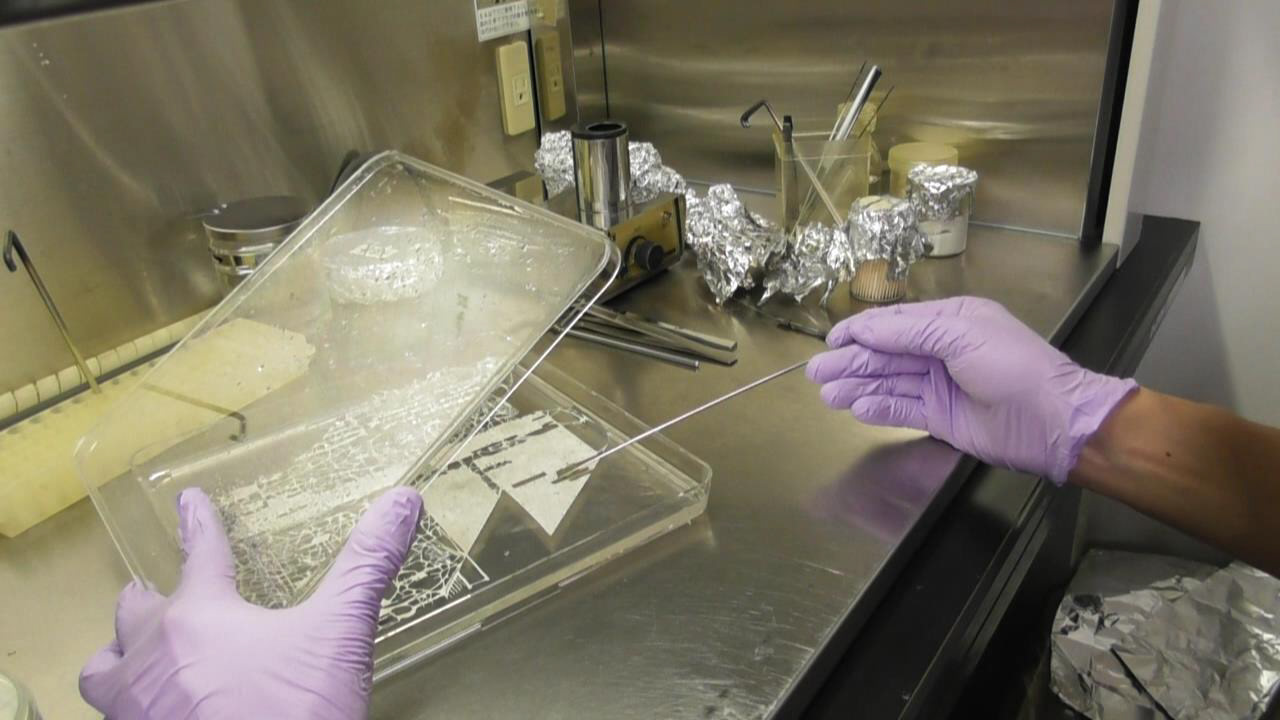
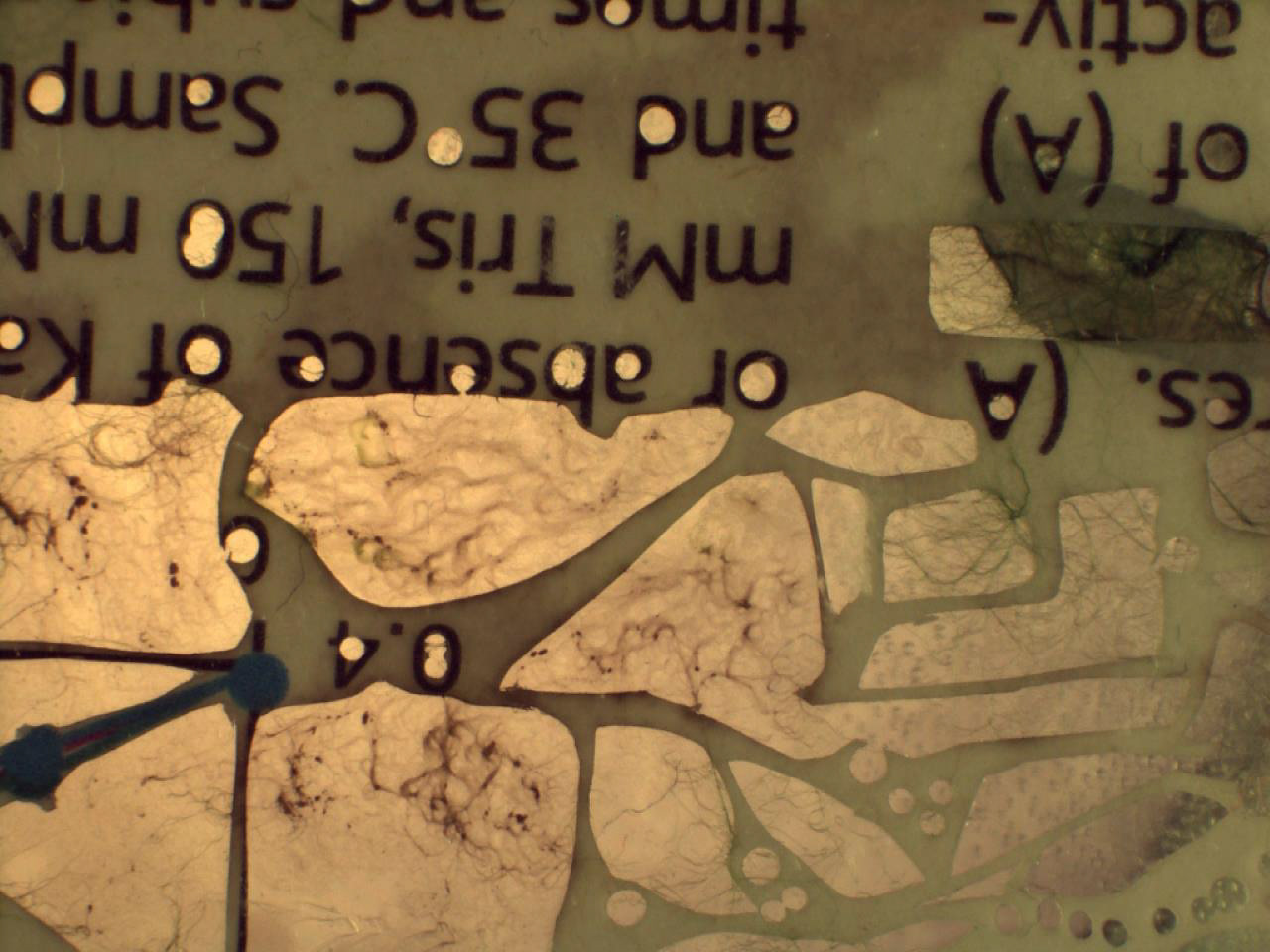

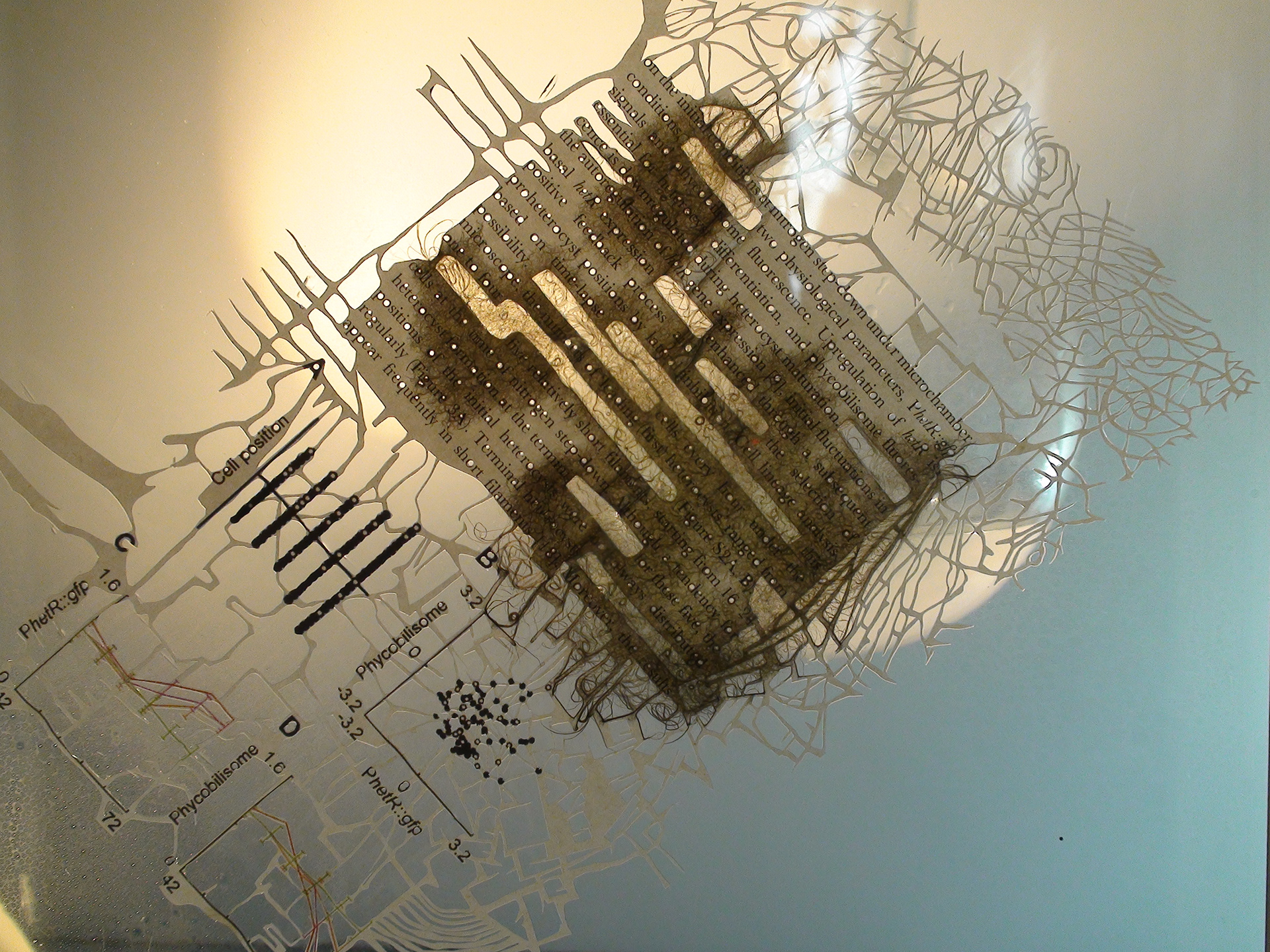
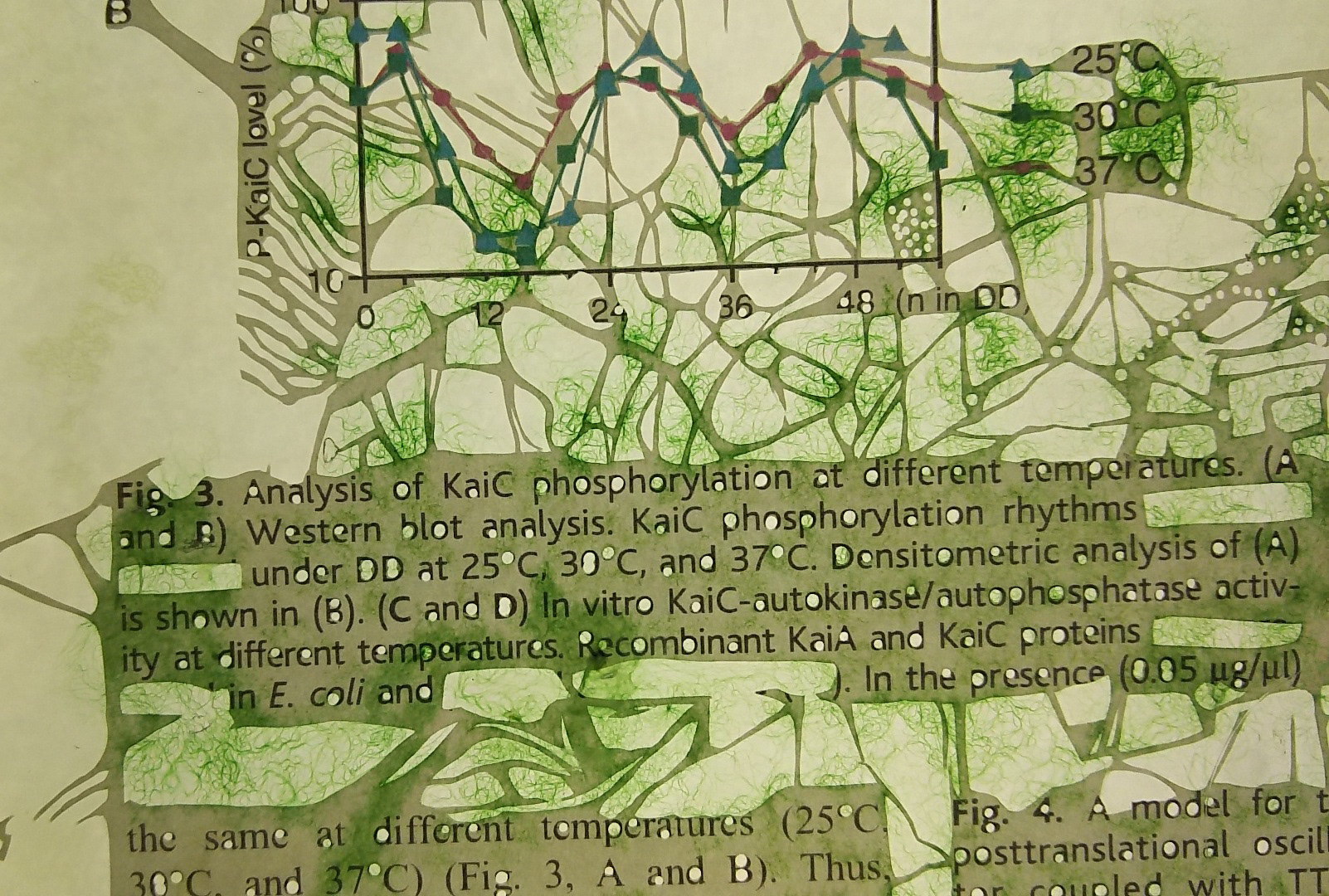
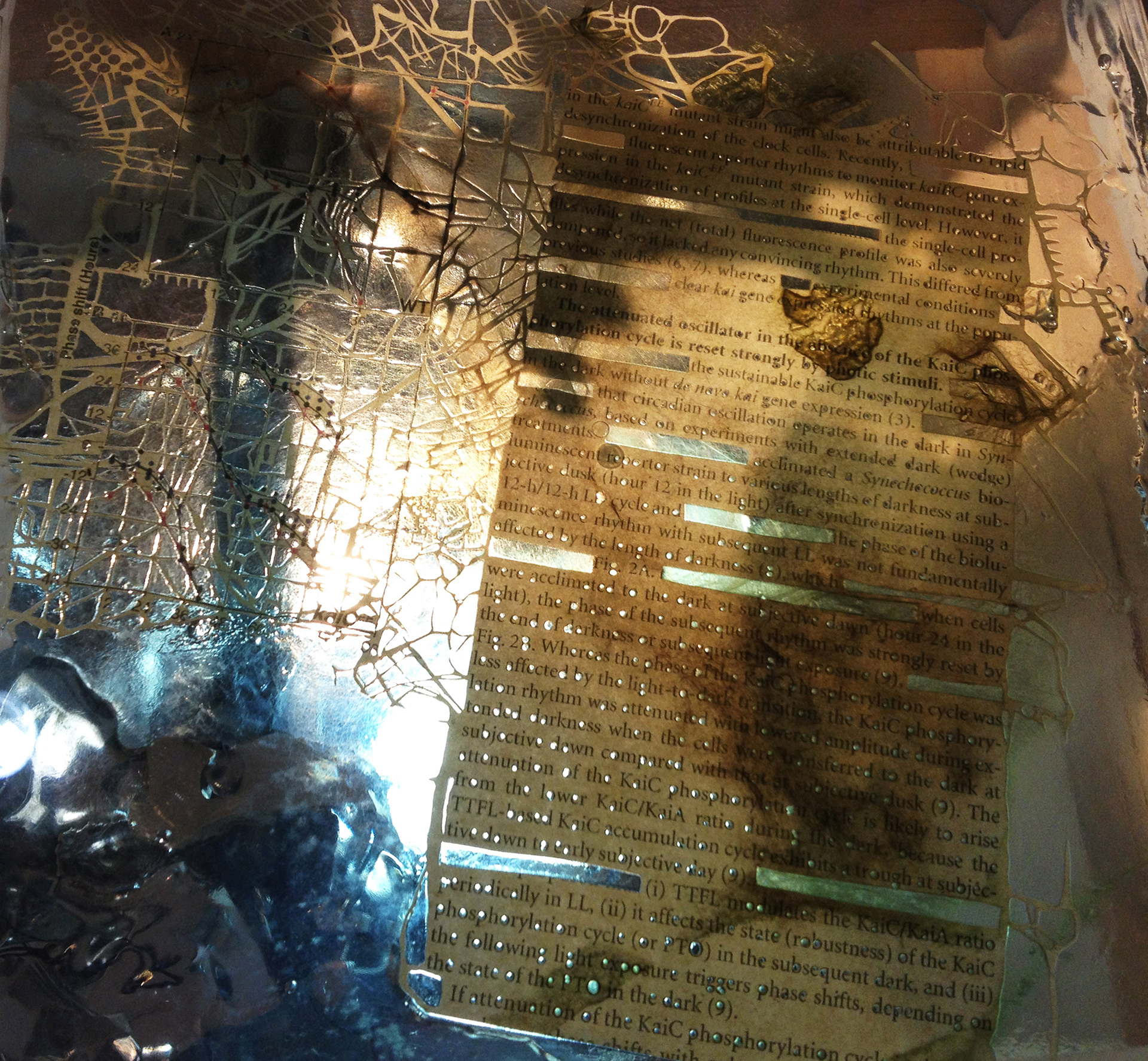
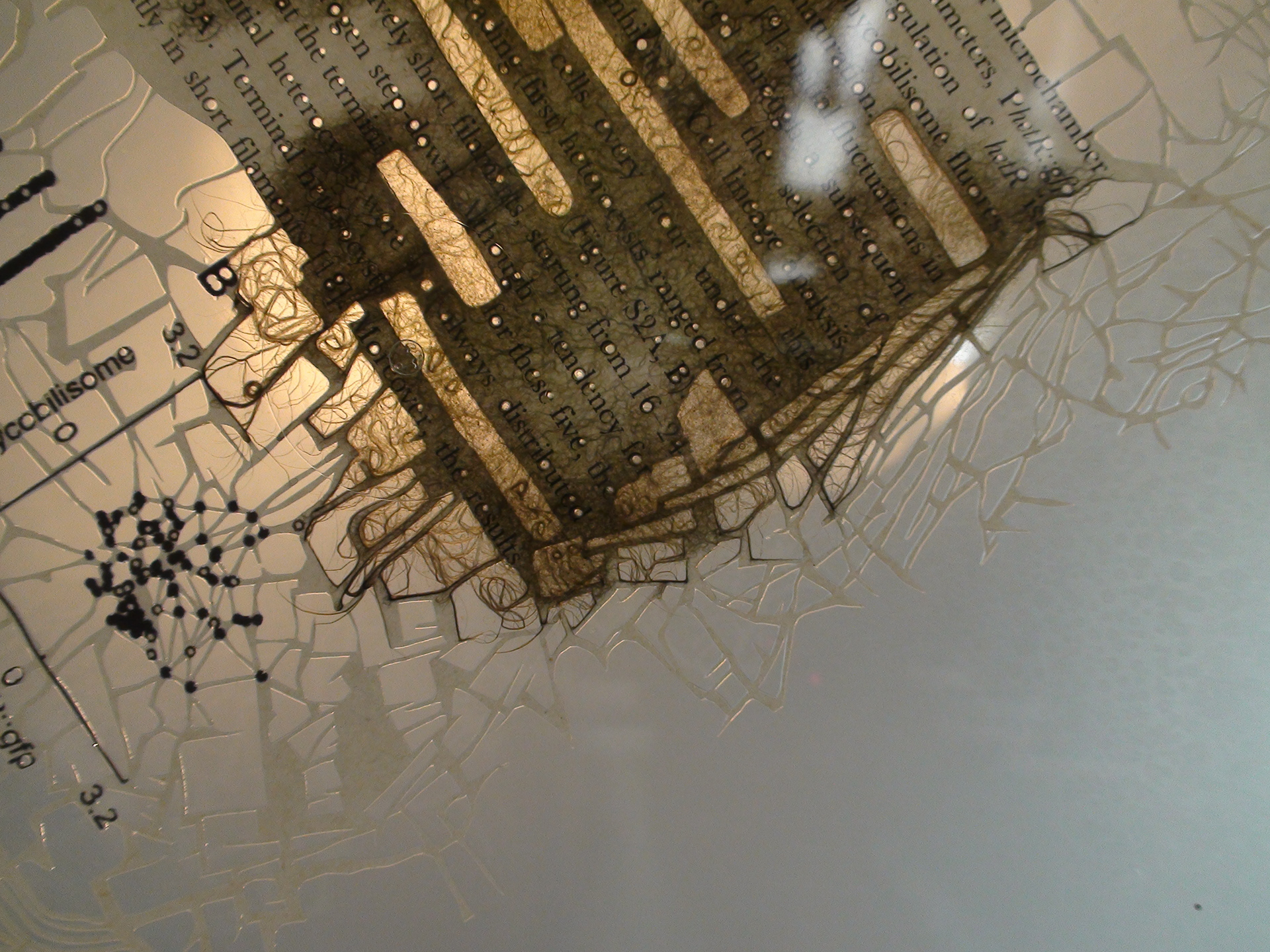
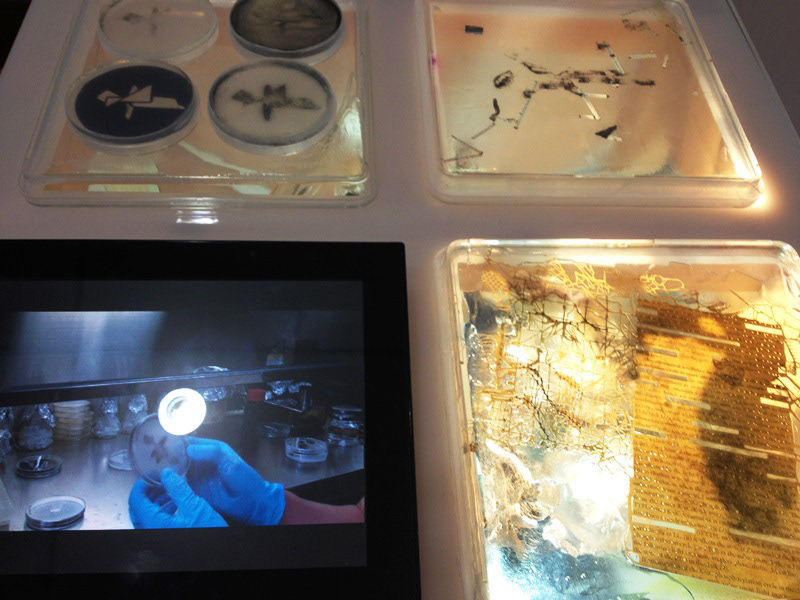

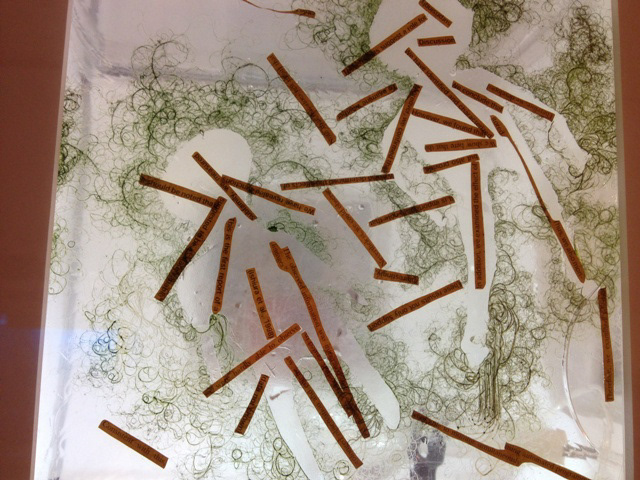
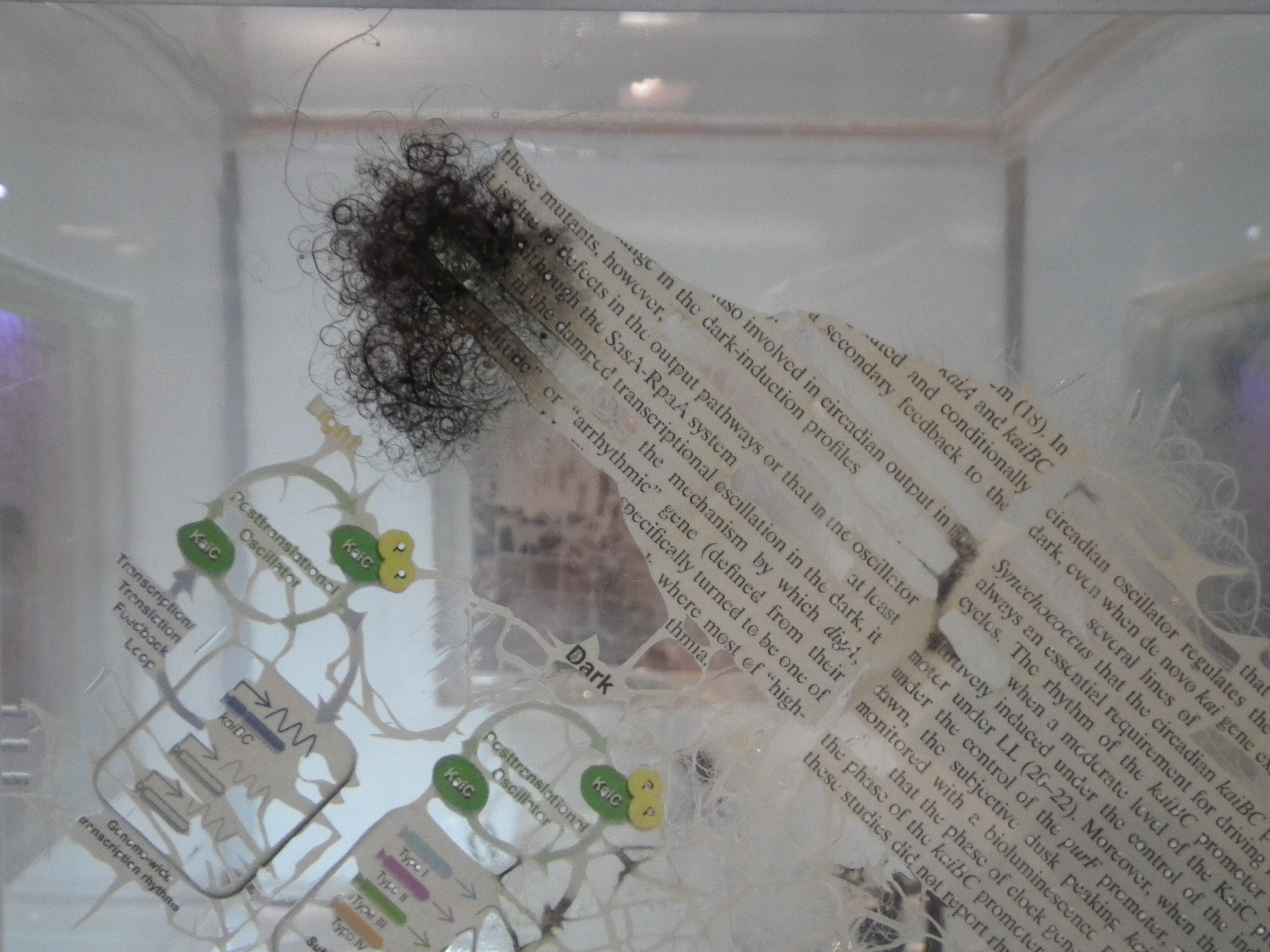
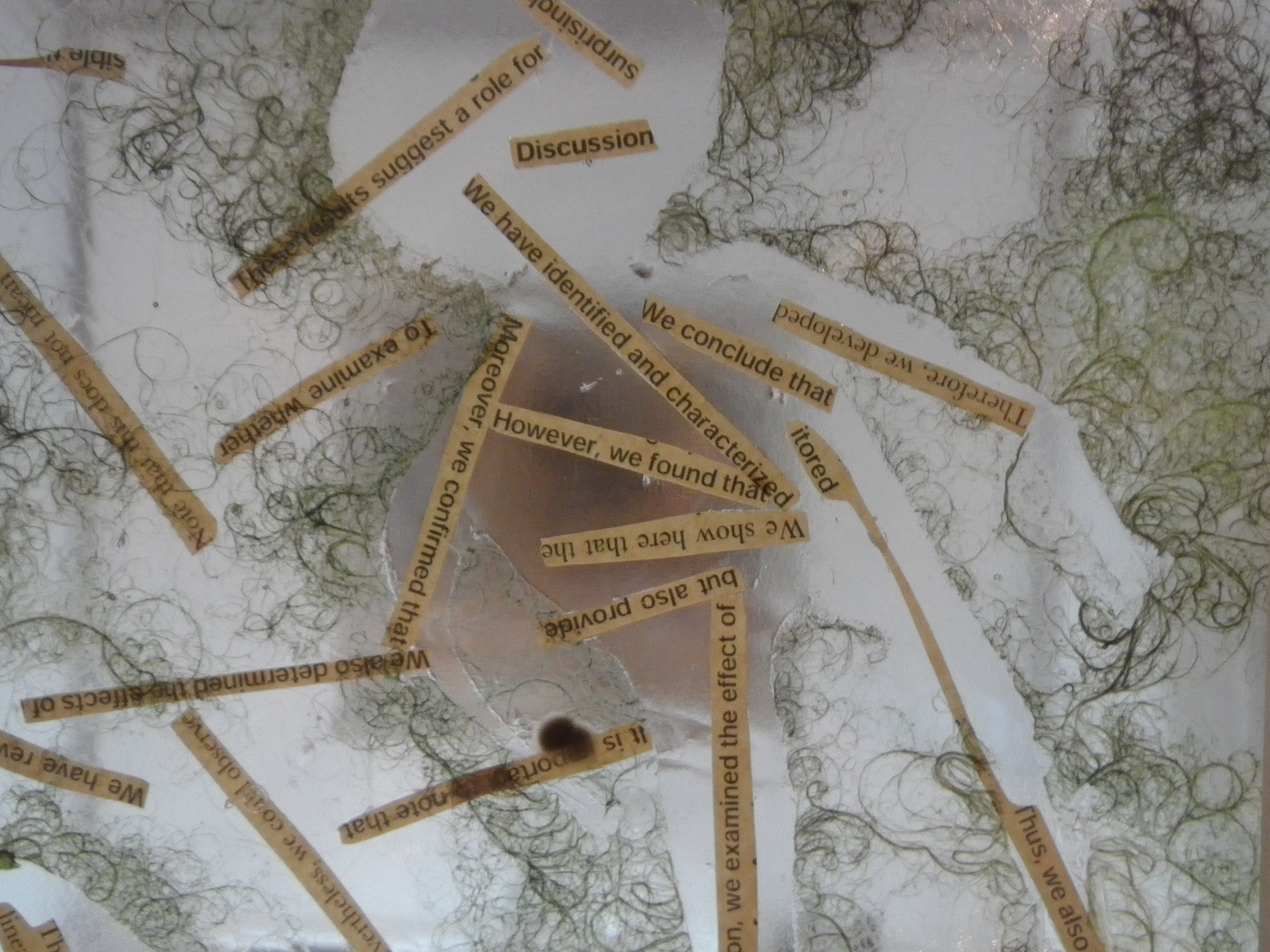
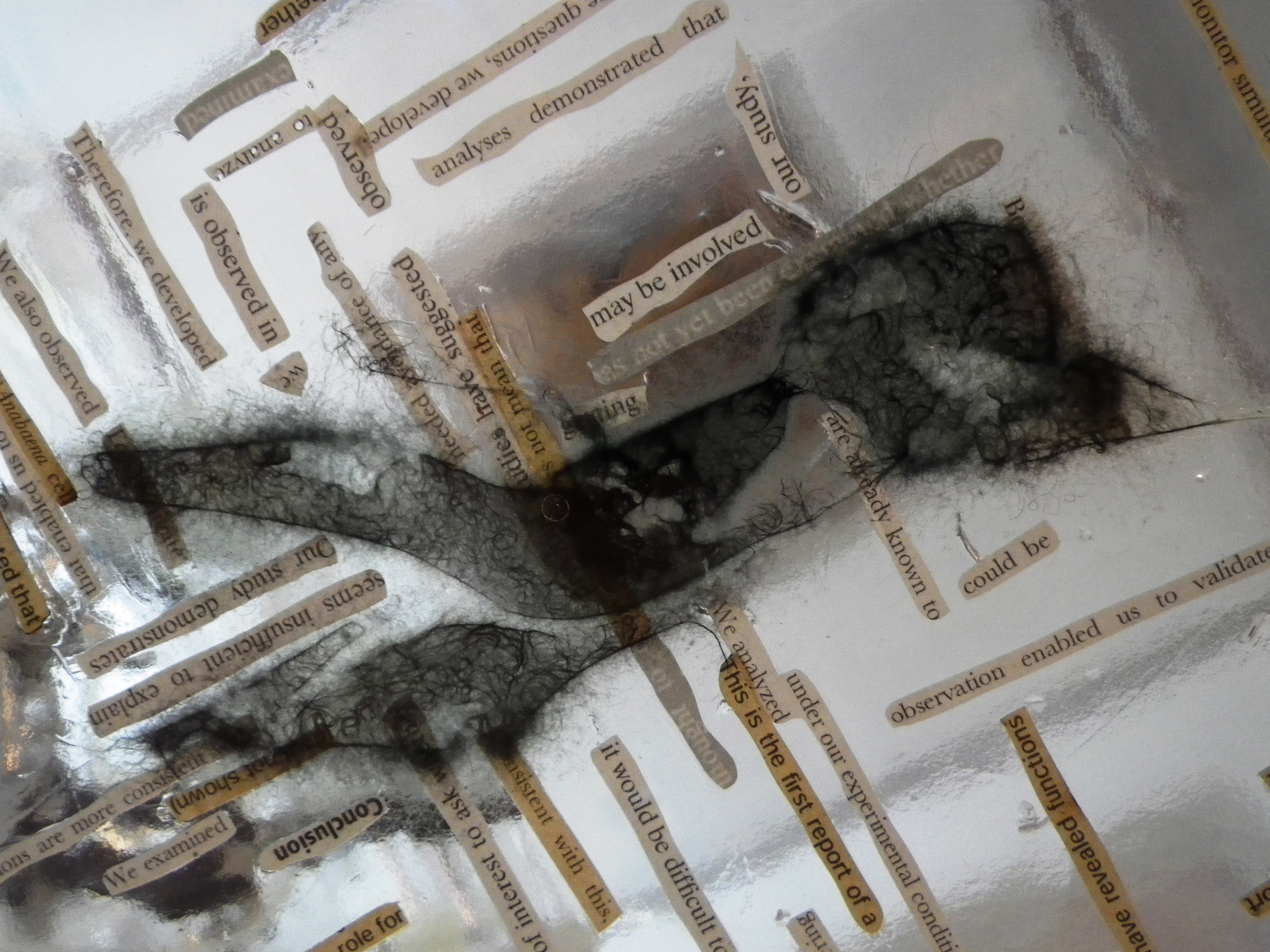
2019 Excellent Award, Japan Media Art Festival. Exhibition at Miraikan (Tokyo)
2018 "Art and Conservation/Repairment" University Museum, Tokyo University of the Arts
2014 "Materializing II" University Museum, Tokyo University of the Arts
2013 "Culturing <Paper>cut", Galerie Wuensch (Linz)
2013-2014 "Open Space 2013: Bioaesthetics Open Lab" NTT InterCommunication Center (Tokyo)